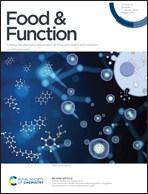Antigen presentation induced variation in ovalbumin sensitization between chicken and duck species
Abstract
The difference in the allergenicity of chicken ovalbumin (C-OVA) and duck ovalbumin (D-OVA) can be related to their differences in antigen presentation. This study explored the differences in uptake between C-OVA and D-OVA through fluorescence dye-labeling, DC antigen presentation, and the immune response of T cells by using C-OVA and D-OVA allergic animal and cell models. The ileum DCs of mice in the C-C group took up more C-OVA than that of D-D and C-D groups through in vivo imaging. Furthermore, C-OVA induced the maturation of DCs in mice in the C-C group as shown in the up-regulation of the expressions of MHC II, CD86 and CD80 on the surface of DCs, and enhanced the ability of antigen presentation. In addition, C-OVA induced the maturation of DCs, promoted the differentiation of T cells into Th2 cells, increased the secretion of the cytokine IL-4 and specific antibody s-IgE, and thus generated an immune response. However, sensitized and cross sensitized D-OVA (D-D and C-D groups) couldn't induce the maturation of DCs, and induced less differentiation of T cells and lower secretion of cytokines compared to C-OVA. In conclusion, the differences in antigen presentation was one of the important factors resulting in the differences in the sensitization between C-OVA and D-OVA.



 Please wait while we load your content...
Please wait while we load your content...